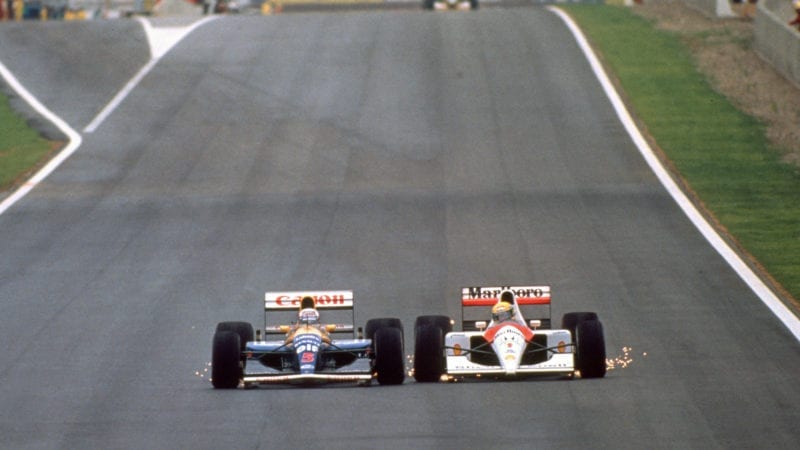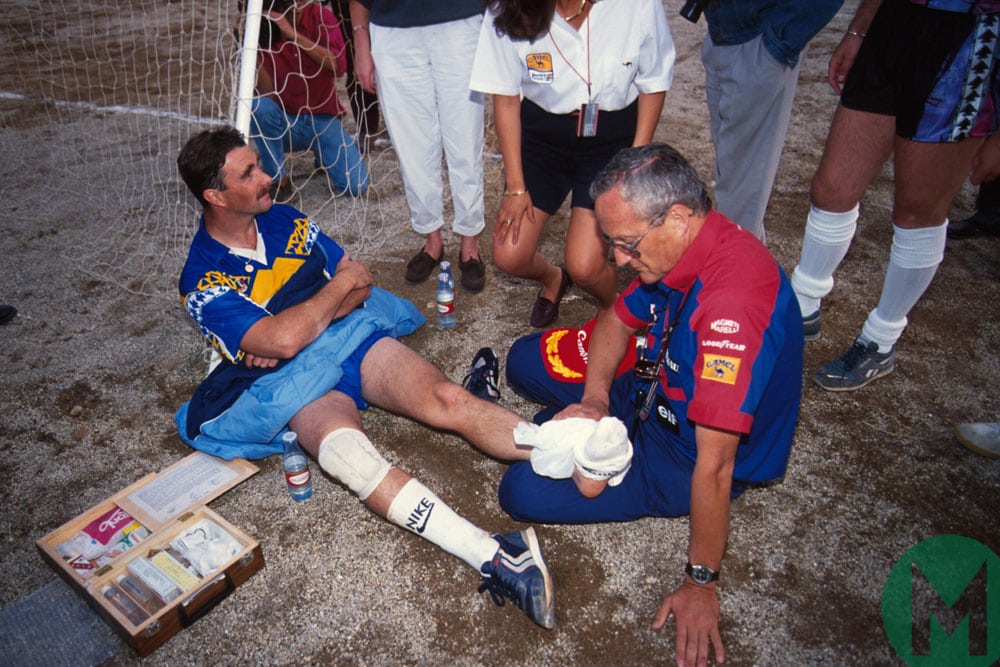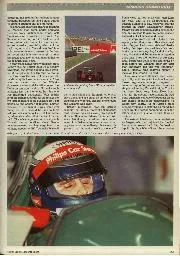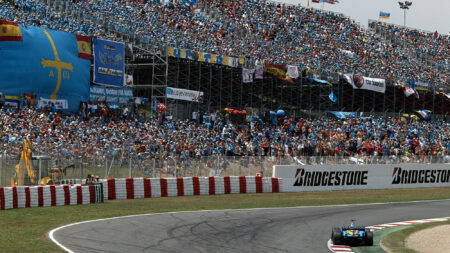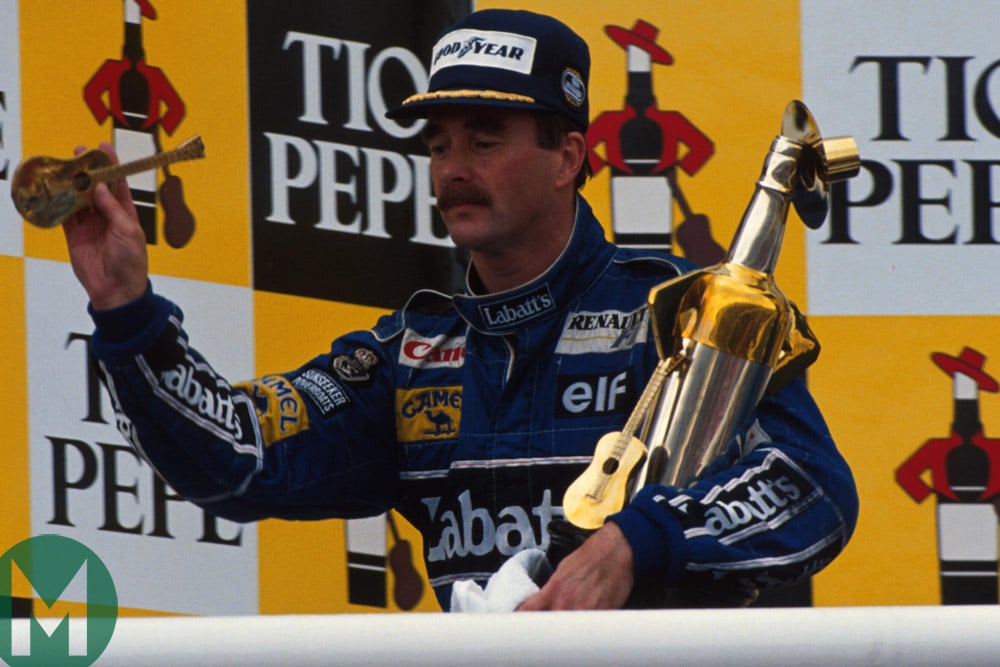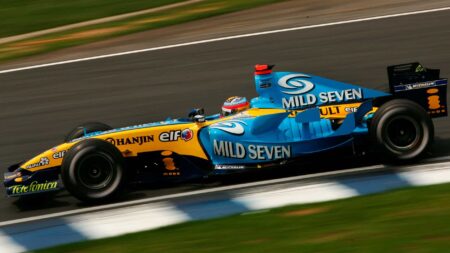“It didn’t take him long to work back on to Senna’s tail, as Berger built up a healthy advantage, and it was a racing brain working at its optimum,” wrote David Tremayne.
After a brief attempt to overtake on Lap Four, Mansell entered the main straight on the following lap in the ideal position.
“A lap later he ducked out of the MP4/6’s slipstream earlier, and the Williams and the McLaren ran side by side,” continued Tremayne. “Normally such incidents last but moments, but this one was prolonged deliciously.
“With sparks scraping from their undercar skidplates the two fastest drivers in the business sat it out alongside one another at 195mph, neither prepared to give an inch.
“It was Grand Prix racing just as it should be, and to their lasting credit neither of them let their morning altercation affect their conduct on the track. The advantage was fractionally with Mansell, but as he dived ahead Senna counter-attacked as they negotiated the left-hand section of Elf. Tactically Mansell ran a little wider than he might otherwise have done, and as Senna, on the outer line, had to move wider still and lost momentum, the Williams was away.”
Not for long, though, as Schumacher – in his fourth Grand Prix – began harrying the pair, and it was soon time to stop for slicks.
With the shadow of the previous race still hanging over Williams, Mansell’s stop was slow, and Senna gained track position once more.
